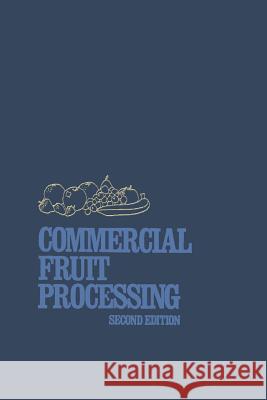Commercial Fruit Processing » książka
Commercial Fruit Processing
ISBN-13: 9789401173872 / Angielski / Miękka / 2012 / 678 str.
- use of fewer additives containing sodium, spices, artificial colors and flavors, and "energy" - continued use of fruits in cereals, salads, cakes, pies, and other com- binations, as a source of minerals, vitamins, fiber, and natural flavors and colors An important recent innovation is low-moisture processing, in which fruit, with no added sugar, preservative, or carrier, is converted into convenient dehydrated forms. Development of this technology has been stimulated by high transportation rates, improvements in technology, and revolutionary new packages. In addition to raisins, prunes, and dehy- drated apples, pears, peaches, and apricots, bananas are available in flakes, slices, and granules; pineapple and other tropical fruits also are available in new forms. Another low-moisture product is apple fiber sol- ids, consisting of cell wall material (cellulose, hemicellulose, lignin, and pectin) and apple sugars. Low-moisture forms of other fruits are becom- mg more common. Commercial Fruit Processing is a companion volume to Commercial Vegetable Processing, also edited by B. S. Luh and J. G. Woodroof; both are being updated and revised simultaneously. Grateful acknowledgments and thanks go to contributors who wrote in their own area of expertise on commercial fruit processing. Credit also goes to more than a dozen commercial companies and individuals who supplied photographs, charts, tables, and data from commercial opera- tions. Thanks also to Ann Autry who typed, corrected, and edited the manu- script; and to Naomi C. Woodroof, my wife, for assisting in research.











